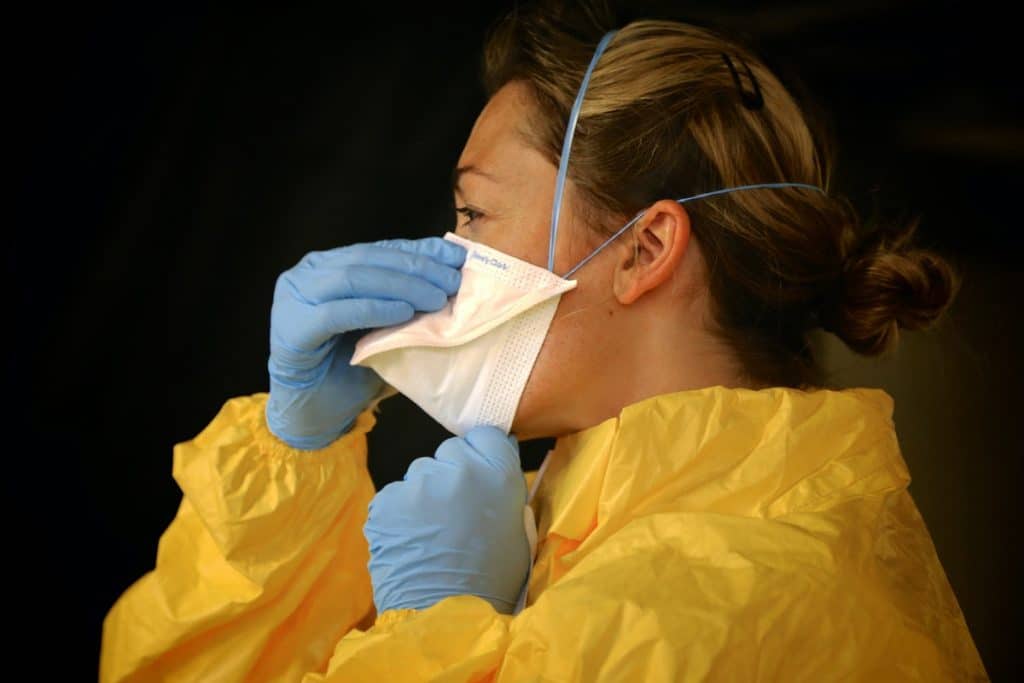Intelligence, indeed, is man’s most significant advantage over other animals on the planet. It’s humanity’s ingenuity that has allowed him to flourish despite the odds. In the face of such an existential threat as the pandemic, for instance, humanity was able to slow down the advance of a world-conquering virus.
To boot, Institute for Health Metrics and Evaluation (IHME) reports 6.9 million deaths globally due to COVID-19. It’s a figure higher than what most experts estimate. Still, that number shows humanity can contain an infectious disease that can eradicate it if left to its own devices.
Had contingent measures such as mask-wearing and stay-at-home orders not been put in place, the number of COVID-19 infections in countries could have risen to uncontrollable levels. Good thing we’ve matured as a species. For one, we’ve gained a lot of experience from past epidemics. It’s not the first time humanity seems to be on its knees, hoping things turn around for the better. There were instances in history that gave man the kind of scare that changes everyday living.

You may not believe it, but it’s not the first time zoonotic diseases (diseases transmitted via animals) have brought man a seemingly impossible challenge. Here, we’re presenting three of the deadliest that had the potential to erase us on the planet and nearly did.
The Black Death
In the history of mankind, there may not be a more sinister threat than the plague that threatened to wipe out Europe. Occurring in the middle of the 14th century (the 1300s), the Black Death is a bubonic plague caused by the bacteria Yersina pistis. The bacteria itself was carried by infected rodents aboard ships from Asia and spread from person to person through the air and infected fleas who feasted on dead rodents.
Being infected was painful as those infected had strange swellings that could grow as big as an apple in various areas of the body (e.g., armpits, groin), a sign which could mean certain death, for some overnight.
Unable to have a full grasp of the causes of the disease, physicians of the day tried all conventional and unconventional ways to rein in the pandemic, to no avail. For example, they used bloodletting, the burning of aromatic herbs, and flagellation. The disease caused so much panic doctors refused to see patients, priests refused to administer services to the dead, and many people infected were left to fend on their own by their families.

To curb the spread, sailors who arrived were placed in isolation for 40 days, breeding the term “quarantine.” When the total human population of the planet was just over 500 million, the millions who died due to the Black Death present a substantial portion of humanity. Today, bubonic diseases can be contained by antibiotics.
Estimated total number of deaths: 75 to 200 million
Malaria
This zoonotic disease is closer to home, and anyone can get it from the bite of an infected mosquito. Specifically, it is the infected female Anopheles mosquito. It has not caused as much fear as the epidemics that rattle humanity, but it hasn’t been contained. There are hundreds of thousands of people who die every year due to malaria; most are from impoverished nations in Africa.
World Health Organization (WHO) data shows, there were 229 million cases of malaria worldwide, with nearly half a million deaths. Children under five are considered the most vulnerable to the disease.
For a greater burden, mosquitoes also are the prime spreader of dengue. Both dengue and malaria do exist yearly in the United States, though sparingly. Fighting these diseases means getting rid of the source of the problem: mosquitoes.
Putting in safety measures to stop the spread of mosquitoes in your area is wise. Additionally, relying on the expertise of mosquito control specialists can be the most logical decision. That way, you ensure the problem is under control in the best way possible.
Estimated total number of deaths: 400,000 yearly with millions infected
The Spanish Flu
As the first world war was at a close, a bigger problem arose: a pandemic. And it came at the most challenging time in history. War means soldiers from different countries will be rubbing shoulders with each other. That means spreading the infectious disease was easy. In its aftermath, the Spanish Flu infected about 500 million people or about a third of the planet’s total population. Eventually, it killed 50 to 100 million, including the sitting Spanish king.
The Spanish Flu is an influenza pandemic caused by another zoonotic disease caused by the H1N1 influenza avian virus. Its spread is so much like COVID-19, which is via respiratory droplets. Experts believe the pandemic spread from an army cook named Albert Gitchell, who was assigned to Camp Funston (Kansas) in 1918. The virus spread from camp to camp in America, and as the soldiers were sent to Europe to fight in the war, the pandemic grew into global proportions.
And as health care was primitive compared to today’s standard. About 675,000 Americans perished due to the disease, a number more than the casualties of the first world war.
Estimated total number of deaths: 50 to 100 million
While these diseases can certainly be alarming, reviewing and learning from them, have been instrumental in winning our fight against the virus today. That indeed shows how humanity is as versatile as ever.














Leave a Reply